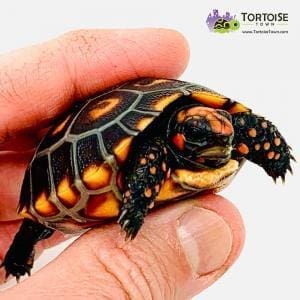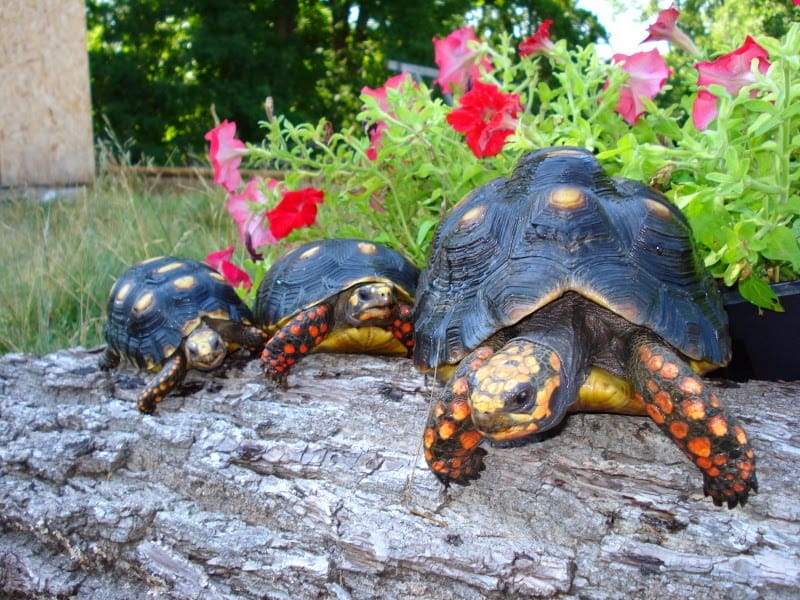
Red Foot Tortoise Lifespan red footed tortoise lifespan The lifespan of a red-footed tortoise can vary depending on many factors but most indications are that they can live for more than 50 years. Hatchlings in the pet trade are usually.

Red foot tortoise temperature.
What is the lifespan of a red footed tortoise. A captive bred hatched and raised red footed tortoise for sale could live as long as 90 years. An Average lifespan of a red foot tortoise is 50-90 years in captivity. Learn proper red footed tortoise care with our red foot tortoise care sheets.
Tortoise town offers a full section specifically on red footed tortoise care. The average red-footed tortoise lifespan is between 30 and 50 years in captivity. This assumes theyre living in a well-maintained environment.
The life expectancy of a red-footed tortoise is heavily impacted by the care they receive. Red Foot Tortoise Lifespan red footed tortoise lifespan The lifespan of a red-footed tortoise can vary depending on many factors but most indications are that they can live for more than 50 years. Sulcata Tortoise Lifespan the Sulcata tortoise can live anywhere from 50 all the way up to 150 years old.
Red-Footed tortoise lifespan Their average life span is observed to be 25 to 35 years but they can even live longer than this thus up to 50 years. Their life span is highly dependent on how frequent they are in saving their lives from predators and to survive population threats. Red footed tortoise Lifespan Red footed tortoises live to be about 50 years old.
For this reason consider the length of the time you will spend with your new shelled friend. Red foot tortoise temperature. Their lifespan is typically somewhere between 50 and 60 years with the oldest captive specimen in the UK recorded at 110 years.
So theyre still a lifelong commitment but perhaps with the advantage of being easier to pass on whenif the time comes. The Red Footed tortoise has a wildly varying lifespan but most would estimate a 50-year lifespan. A popular pet with striking shell coloring and markings red-footed tortoises are long-lived and relatively easy to care for.
If youre thinking of getting one expect to make a significant investment in equipment food and your living space for what could be a 50-year commitment. Tortoises are the longest-living land animals in the world although the longest-living species of tortoise is a matter of debate. Galápagos tortoises are noted to live over 150 years but an Aldabra giant tortoise named Adwaita may have lived an estimated 255 years.
Red-footed tortoises have a concave bumpy shell. Their skin is mostly black with shells being typically black gray or brown. Young tortoises have small distinct areas of yellow or tan coloring surrounding or covering each bump.
Bright red marks may appear on the head. The legs and tail often have patches of orange yellow or red. Cherry head tortoise lifespan They are generally long-lived tropical species having a life span above then 50 years to an average of 90 years in captivity under proper care.
What do Painted Turtles Eat Cherry head tortoise care. Red-foots are a medium-sized hardy tortoise with energy and personality. The red-footed tortoise is native to a wide variety of habitats ranging from humid tropical forests to the dry savannah or semi-arid land of Central and South America.
Generally the species prefers a humid environment. Red-footed tortoises make excellent pets. Hatchlings in the pet trade are usually.
The tortoises grow most rapidly during the first five to 10 years of their life. Red-footed tortoises may have life spans upwards of 50 years or more. Tortoises kept in enclosures that mimic their natural habitats generally live longer than tortoises kept in clearly artificially settings.
Cherry Head Red footed tortoise Lifespan Cherry head Red footed tortoises live to be about 50 years old. For this reason consider the length of the time you will spend with your new shelled friend. Cherry Head tortoise temperature.
Red Footed Tortoise Lifespan Tortoises maintained in an ideal and natural setting has a longer life span than those bred in artificial conditions. Various factors play a vital role in deciding their lifespan. Many sources claim that these species live for around 50 years.